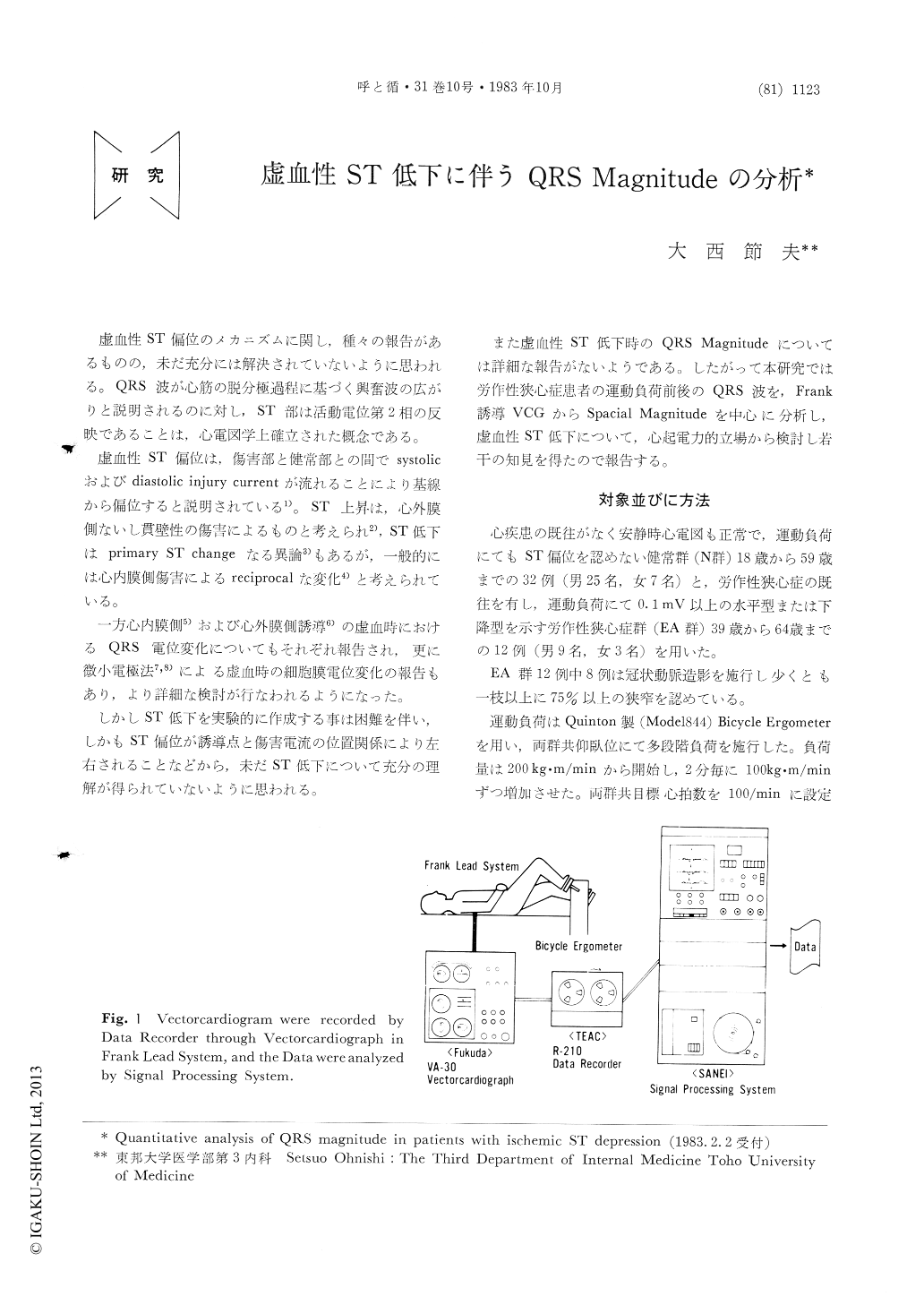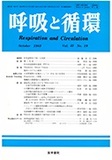Japanese
English
- 有料閲覧
- Abstract 文献概要
- 1ページ目 Look Inside
虚血性ST偏位のメカニズムに関し,種々の報告があるものの,未だ充分には解決されていないように思われる。QRS波が心筋の脱分極過程に基づく興奮波の広がりと説明されるのに対し,ST部は活動電位第2相の反映であることは,心電図学上確立された概念である。
虚血性ST偏位は,傷害部と健常部との間でsystolicおよびdiastolic injury currentが流れることにより基線から偏位すると説明されている1)。ST上昇は,心外膜側ないし貫壁性の傷害によるものと考えられ2),ST低下はprimary ST changeなる異論3)もあるが,一般的には心内膜側傷害によるreciprocalな変化4)と考えられている。
The present study was analyzed to estimate the quantitative discrepancy of the Frank lead QRS vectors before and immediately after exercise in 32 normal subjects and 12 patients with the ischemic ST depression. Exercise was performed on a bicycle ergometer. The workload was increased in a stepwise manner. The duration from QRS onset to the maximum magnitude of QRS vector did not change significantly before and after exercise in normal subjects and the patients. The terminal QRS vectors after exercise were shifted toward the right and superior in normal subjects and the patients. The spatial magnitude of the QRS vectors decreased at the interval from 22 msec. to 34 msec. and increased at the interval from 58 msec. to 74 msec. after QRS onset after exercise in patients, but did not change in normal subjects. The azimuth and elevation of the QRS vectors at the interval except the late phase after QRS onset did not change significantly before and after exercise in normal subjects and the patients.
Therefore, this decreased or increased spatial magnitude of QRS vectors after exercise in the patients with ST depression may be related to the myocardial ischemia.

Copyright © 1983, Igaku-Shoin Ltd. All rights reserved.


